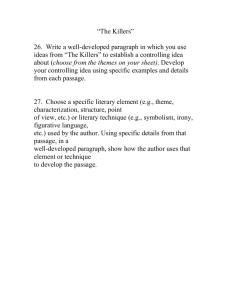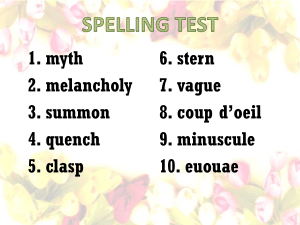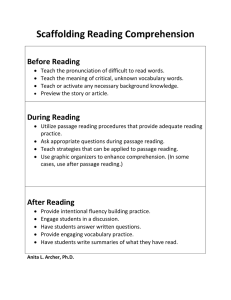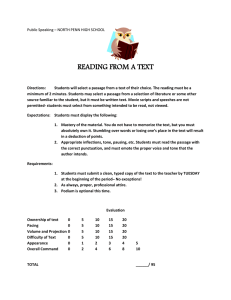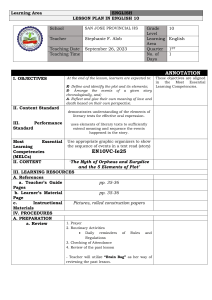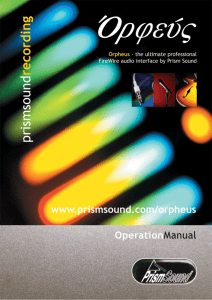Annotations for Orpheus and Eurydice
advertisement
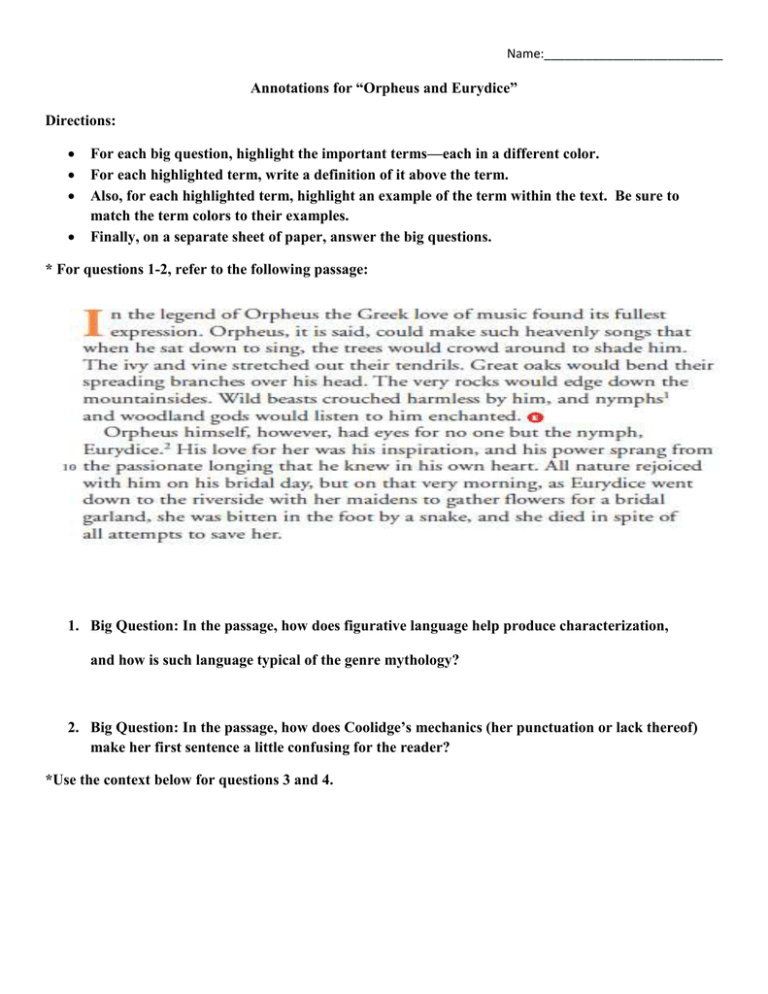
Name:__________________________ Annotations for “Orpheus and Eurydice” Directions: For each big question, highlight the important terms—each in a different color. For each highlighted term, write a definition of it above the term. Also, for each highlighted term, highlight an example of the term within the text. Be sure to match the term colors to their examples. Finally, on a separate sheet of paper, answer the big questions. * For questions 1-2, refer to the following passage: 1. Big Question: In the passage, how does figurative language help produce characterization, and how is such language typical of the genre mythology? 2. Big Question: In the passage, how does Coolidge’s mechanics (her punctuation or lack thereof) make her first sentence a little confusing for the reader? *Use the context below for questions 3 and 4. Name:__________________________ 3. Big Question: How do the sound devices, figurative language, and allusions contribute to the overall mood of this passage? 4. Big Question: Why did Coolidge place the apostrophe after the s in Hades in the second sentence? *Use the following passage for the remaining questions. Name:__________________________ 5. Big Question: What clues does Orpheus use to surmise that Eurydice was maybe not following him, and what characterization does his subsequent doubt reveal? 6. Big Question: How do the figurative language and both Orpheus’s and Hades’ actions illuminate the theme of this myth?
